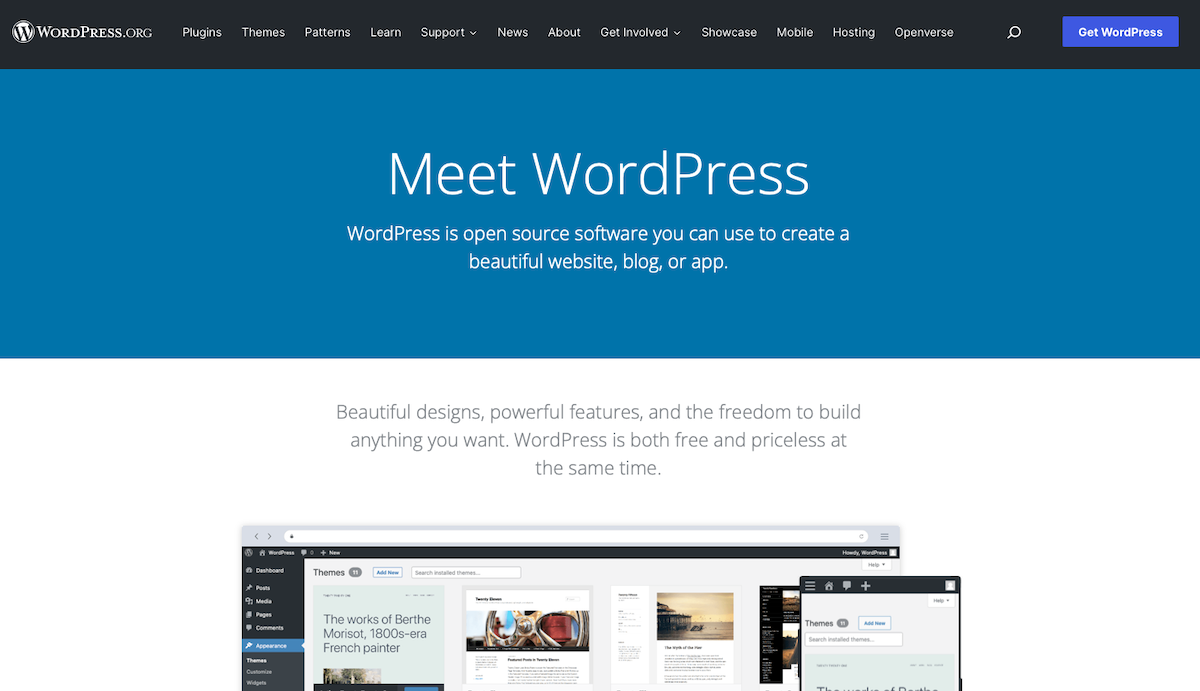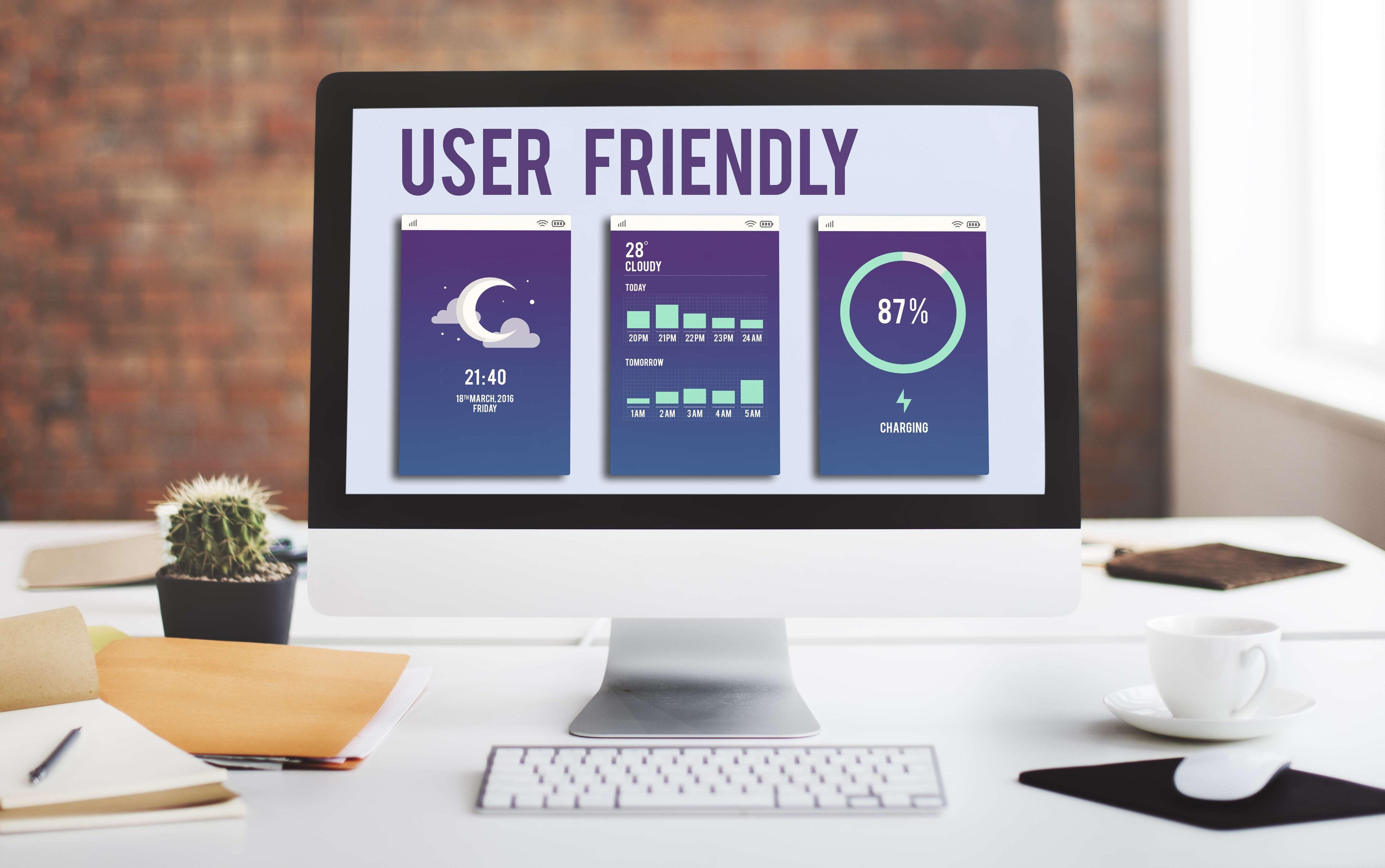We've all encountered that one website that is just impossible to use. You know the one: it's so slow, the design is from the early 2000s, and you can't even figure out how to find what you're looking for. As frustrating as it may be to use a website like this, it's even more frustrating for businesses who are losing customers and sales because of it.
Common website mistakes can cost you dearly in terms of both money and customers. In fact, a study by Stanford University found that 46.1% of people wouldn't return to a website after having a bad experience with it. This means that not only will you lose potential customers, but you could also damage your reputation.
Thankfully, whether you're a business owner or a web designer, there are a few things you can do to make your website more accessible and easy to use.
What follows are 17 tips for creating a more user-friendly website. But first, let's define what "user-friendly" actually means in the context of interacting with a website.
What Does "User-Friendly" Mean, Anyway?
At least when it comes to websites, "user-friendly," means that the site is easy to use and navigate. A user-friendly website will have clear and concise menus, well-defined content areas, and easy-to-use search features.
A user-friendly website is also one that's designed with the user in mind. For example, a site that's designed for selling products will be much different than one that's designed for providing information. The former will likely have a much more streamlined design, while the latter might be more text-heavy.
17 Tips for Making a More User-Friendly Website
1. Keep the Design Simple

One of the most important things you can do to make your website more user-friendly is to keep the design simple. A simple design is easy to navigate and understand. It's also less likely to overwhelm users with too much information.
When it comes to website design, less is almost always more. This doesn't mean that your site has to be boring, but it does mean that you should focus on creating a clean, efficient, and visually appealing design.
Some of the best website designs are those that are focused on delivering a specific user experience. For example, if you're designing a site for selling products, the design should be geared towards helping users find and purchase products.
2. Make Sure the Navigation is Clear and Concise
The navigation is one of the most important aspects of a website. It's what allows users to move around the site and find the information they're looking for.
As such, it's important to make sure that the navigation is clear and concise. All of the links should be easy to find and understand. The menus should be well-organized and logical. And drop-down menus should only be used when absolutely necessary.
3. Use Visual Cues
Visual cues are a great way to help users understand your website and find their way around. These can include things like arrows, icons, and other visual elements that help guide users to where they need to go.
4. Use Whitespace
Whitespace is an important part of web design. It's the empty space on a page that allows users to rest their eyes and focus on the content.
Too much white space can make a website feel unfinished. But too little white space can make it feel cramped and difficult to read. The key is to find a balance.
5. Use Hierarchy in Your Design
Hierarchy is the way in which you arrange the elements on your page. It's important to use hierarchy in your design because it allows you to control the order in which users will see and interact with the different elements on your site.
For example, you might use hierarchy to make sure that the most important information is seen first. Or you might use it to guide users through a specific process (like making a purchase).
6. Make Sure the Content is Easy to Read
The content on your website should be easy to read. This means using clear and concise language, short paragraphs, and plenty of white space.
It also means using typography that's easy to read. For body text, you should use a sans-serif font like Arial or Helvetica. And for headings, you can use a serif font like Times New Roman or Georgia.
7. Optimize Your Images
Images are a great way to add visual interest to your website. But they can also make your site slow to load and difficult to navigate.
As such, it's important to optimize your images before adding them to your website. This means reducing the file size of the image, using the correct file format, and adding alt text.
8. Use CSS for Styling

CSS (Cascading Style Sheets) allows you to control the look and feel of your website. It's what allows you to change the font, colors, and layout of your site.
CSS is an important part of web design because it allows you to create a consistent look and feel across all of your pages. It also makes it easy to make changes to your design without having to update each individual page.
9. Use a Responsive Design
A responsive design is a type of web design that automatically adjusts to fit the screen size of the device it's being viewed on. This is important because it allows users to have a consistent experience regardless of whether they're viewing your site on a desktop computer, a laptop, a tablet, or a smartphone. Thankfully, there are many templates and WordPress themes available that offer this feature by default.
10. Test Your Website
Once you've designed your website, it's important to test it to make sure everything is working properly. This means testing each individual page and link to make sure there are no broken links or errors.
It also means testing your site on different browsers and devices to make sure it's compatible. And finally, it means testing your site under different conditions (like with a slow internet connection) to make sure it can handle different types of traffic.
11. Maintain Your Website
Once your website is up and running, it's important to maintain it on a regular basis. This means regularly updating your content, adding new features and functionality, and fixing any bugs or errors that pop up.
It also means monitoring your site to make sure it's performing well and making changes as needed. By regularly maintaining your website, you can ensure that it will continue to run smoothly and efficiently.
12. Get Feedback From Others
One of the best ways to improve your web design skills is to get feedback from others. This can be done by joining a community or forum, attending a meetup or conference, or simply asking a friend or colleague for their opinion.
Getting feedback from others will help you to see your work from a different perspective and learn new techniques. It's an essential part of the learning process and will make you a better designer in the long run.
13. Hire a Professional
If you're not confident in your ability to design a website on your own, you can always hire a professional. A professional web designer will have the skills and experience necessary to create a website that's both user-friendly and visually appealing.
Hiring a professional is a great option if you're looking to create a complex or custom website. It's also a good option if you don't have the time or resources to design your site on your own.
14. Use a Content Management System

If you're not interested in designing your website from scratch, you can always use a content management system (CMS). A CMS is a platform that allows you to create and manage your website without having to code it yourself.
There are many different CMS options available, so you'll need to choose one that's right for your needs. Popular CMS options include WordPress, Drupal, and Joomla.
15. Learn From Others
One of the best ways to improve your web design skills is to learn from others. This can be done by reading articles or tutorials, watching videos, or attending workshops or conferences.
There's a wealth of information available on the internet, so you should never feel like you're stuck. If you're struggling with something, chances are someone else has too and has written about it.
16. Be Willing to Experiment
When it comes to web design, experimentation is key. There's no one right way to do things, so don't be afraid to try new things. If something doesn't work out, you can always go back and try something else.
The important thing is to keep learning and growing as a designer. By experimenting, you'll be able to find new and better ways of doing things. And ultimately, that's what will make you a successful designer.
17. Stay Up-to-Date With Trends
The world of web design is always changing, so it's important to stay up-to-date with the latest trends. This can be done by reading articles and blogs, watching videos, or attending conferences and workshops.
By staying up-to-date with the latest trends, you'll be able to bring new and fresh ideas to your work. This will make you a more successful and well-rounded designer.
Final Thoughts
Make Your Website More User-Friendly Immediately!
Hopefully at least a few of these tips resonated with you. And if you're looking for more immediate help in making your website more user-friendly, we've got you covered. Our hosting plans make it much easier to build a site that’s user-friendly. When the infrastructure is solid, the rest comes much easier.
Frequently Asked Questions
What is the best CMS?
Everyone has their own favorite CMS, but the best one for you is the one that matches your business requirements.
Is a CMS hard to use?
No. CMSs can be used with minimal training, and you don’t need a programming background in order to use one.
What are the best web builder tools?
Some of the best web builder tools are Wix, Squarespace, Weebly, Webnode, Webflow, Jimdo, Duda, GoDaddy Websites, Strikingly, Site123, Webstarts, and much more!
What are the customization options with a website builder?
Although website builders usually have some customization settings, like templates, fonts, margins editing, and so on, when compared to CMSs, it lacks customization options.

Brenda Barron is a freelance writer and editor living in southern California. With over a decade of experience crafting prose for businesses of all sizes, she has a solid understanding of what it takes to capture a reader's attention.
View all posts by Brenda Barron



















